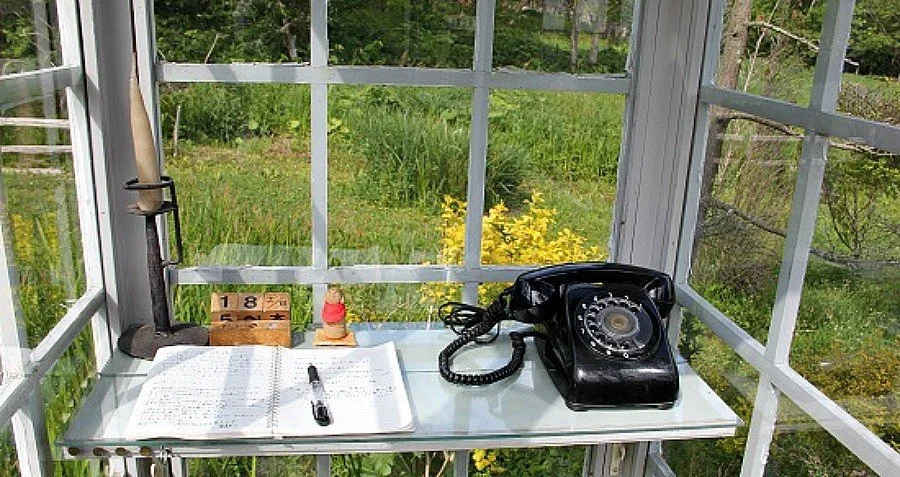The following resources are projects, artworks, and reflections on the intersection of death, dying and grief through multiple perspectives or through collective experience. Please email me at j@janelleketcher.com if you have any suggestions of resources that can be added!
AIDS Memorial Quilt
The Quilt was conceived in November of 1985 by long-time San Francisco gay rights activist Cleve Jones. Since the 1978 assassinations of gay San Francisco Supervisor Harvey Milk and Mayor George Moscone, Jones had helped organize the annual candlelight march honoring these men. While planning the 1985 march, he learned that over 1,000 San Franciscans had been lost to AIDS. He asked each of his fellow marchers to write on placards the names of friends and loved ones who had died of AIDS. At the end of the march, Jones and others stood on ladders taping these placards to the walls of the San Francisco Federal Building. The wall of names looked like a patchwork quilt.
Inspired by this sight, Jones and friends made plans for a larger memorial. A little over a year later, a small group of strangers gathered in a San Francisco storefront to document the lives they feared history would neglect. Their goal was to create a memorial for those who had died of AIDS, and to thereby help people understand the devastating impact of the disease. This meeting of devoted friends and lovers served as the foundation of the NAMES Project AIDS Memorial Quilt.
Photo from National AIDS Memorial Website
PHONE OF THE WIND
Positioned atop a grassy hill overlooking the Pacific Ocean, a phone booth in Otsuchi, Japan allows living people to call their dead relatives and loved ones. Called the “phone of the wind,” the disconnected rotary phone positioned inside a glass booth allows callers to send verbal messages to those they’ve lost, which the wind then carries away.
After the End
Candy Chang and James A. Reeves’ After the End is a public installation in Green-Wood Cemetery’s Historic Chapel dedicated to contemplating loss in all forms—the loss of loved ones, relationships, health, and worlds we once knew—as well as the practices that have helped us endure. Candy Chang and James A. Reeves invite visitors to anonymously share their experience on a scroll and place it upon an illuminated altar. Lit from within, each response embodies the form of a devotional candle, and together they create an evolving field of light. Visitors can read the handwritten reflections in the altar or sit in the apse and watch an ever-growing cycle of projected reflections above while oriented towards the greater community. Set to an original ambient score by Stephen Baker, the space gathers the multiplicity of ways we weather the difficult transitions in our lives. Inspired by the role of light in religious ceremonies and the visions of science fiction, After the End offers a refuge that reminds us we are not alone as we mourn the end of one reality and enter the next.
Photo from artist’s website by Walter Wlodarczyk
Memorialize the Movement
Memorialize the Movement is an ongoing initiative to collect and preserve the plywood protest art that was created in response to the murder of George Floyd in Minneapolis on May 25th, 2020. Their goal is to create a safe and inclusive permanent space for people to reflect on the events that occurred during the summer of 2020 and ensure that we keep this Civil Rights movement going through this art.
Image from Unicorn Riot
BEFORE I DIE
Before I Die is a global art project that invites people to reflect on death and share their personal aspirations in public. Originally created by Candy Chang in New Orleans after the death of a loved one, there are now over 5,000 walls around the world.
Ghost Bikes
Ethan Brooks’s short documentary, "Ghost Bike," is the story of Brooklyn resident Mirza Molberg, who began volunteering with his local ghost bike project in 2011. In 2016, his girlfriend, Lauren Davis, was fatally struck by a car on her bicycle en route to work. Hours after the accident, Molberg stopped at the site of Davis’s death. “There was no evidence [of the accident],” he said. “I created Lauren’s ghost bike the following week.” Much like the spectral bikes themselves, the film renders a personal tragedy universal.
THE ARTISTS’ GRIEF DECK
A response to the COVID-19 pandemic, The ARTISTS’ GRIEF DECK is a set of 60 medium format ‘flashcards’ that are individually designed by artists, sometimes in collaboration with grief workers. One side displays an original artwork, created by artists from around the world responding to our open call, and on the reverse is a ‘grieving prompt.’ These are memorial and processual actions that give the individual something to do – a gesture, a tiny performance, a movement, an act of mindfulness – in memoriam for someone or something whose loss they are grieving. As a toolkit, the decks have been disbursed for free to grief workers and community organizations, and can be purchased here.
Water Ballet
Friends honor artist’s last wishes with water ballet in a Seattle kiddie pool. Some prefer funerals, some prefer having their ashes scattered, but local artist Briar Bates chose a different way to commemorate her death — instructing her friends to perform a water ballet in the wading pool at Volunteer Park. Read the full story here.






